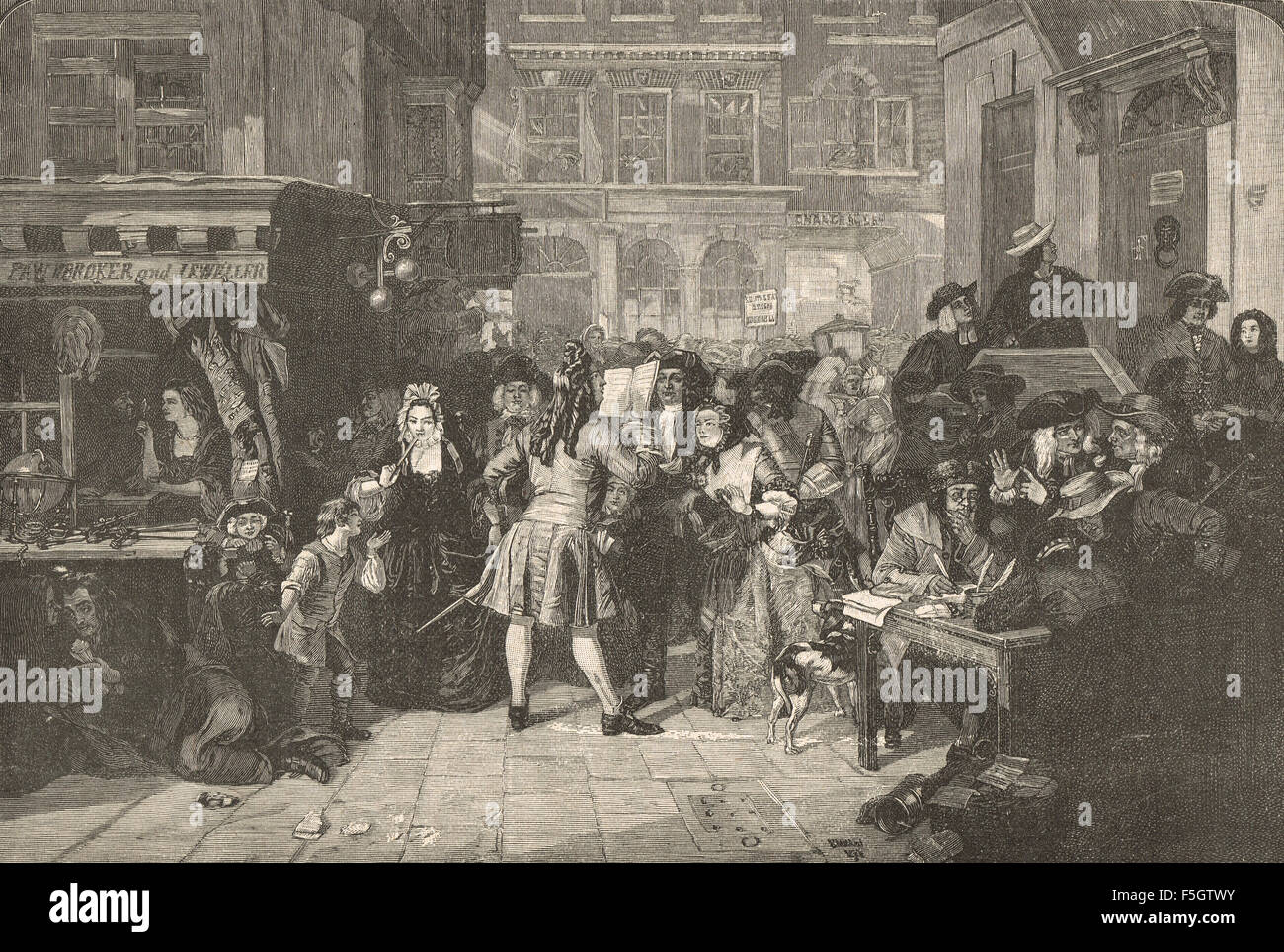The South Sea Bubble a scene in Change Alley 1720

Image details
Contributor:
Historical Images Archive / Alamy Stock PhotoImage ID:
F5GTWYFile size:
46.3 MB (5 MB Compressed download)Releases:
Model - no | Property - noDo I need a release?Dimensions:
4904 x 3297 px | 41.5 x 27.9 cm | 16.3 x 11 inches | 300dpiDate taken:
1901Location:
EnglandMore information:
This image could have imperfections as it’s either historical or reportage.
From an original illustration Cassell's Illustrated History of England pub circa 1901 After Edward Matthew Ward (1816-1879). From Historic-uk, com:In 1720 the whole of England became involved with what has since become known as The South Sea Bubble. In 1720, in return for a loan of £7 million to finance the war against France, the House of Lords passed the South Sea Bill, which allowed the South Sea Company a monopoly in trade with South America. south sea bubbleThe company underwrote the English National Debt, which stood at £30 million, on a promise of 5% interest from the Government. Shares immediately rose to 10 times their value, speculation ran wild and all sorts of companies, some lunatic, some fraudulent or just optimistic were launched. For example; one company floated was to buy the Irish Bogs, another to manufacture a gun to fire square cannon balls and the most ludicrous of all "For carrying-on an undertaking of great advantage but no-one to know what it is!!" Unbelievably £2000 was invested in this one! The country went wild, stocks increased in all these and other 'dodgy' schemes, and huge fortunes were made. Then the 'bubble' in London burst! The stocks crashed and people all over the country lost all of their money. Porters and ladies maids who had bought their own carriages became destitute almost overnight. The Clergy, Bishops and the Gentry lost their life savings; the whole country suffered a catastrophic loss of money and property. Eventually Robert Walpole widely regarded as the first Prime Minister was given the task of cleaning up the mess.